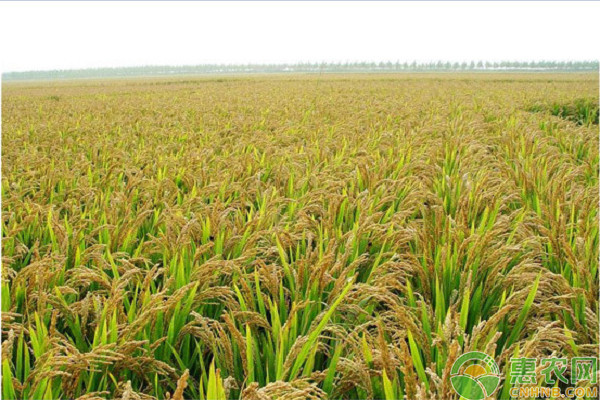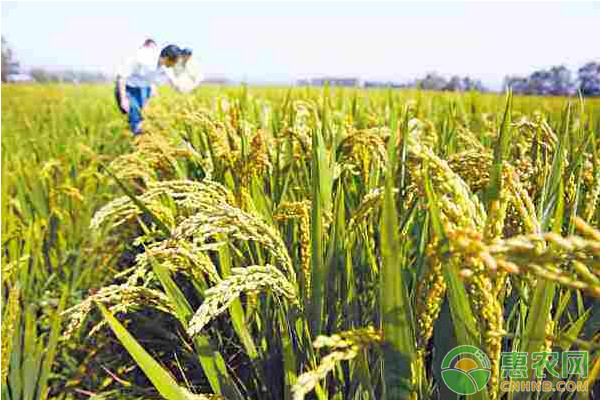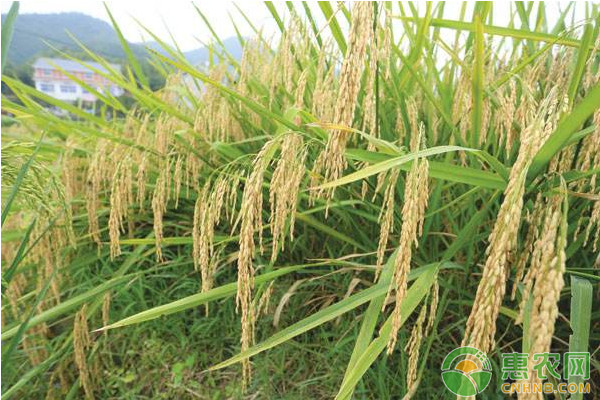Rice is one of the main food crops in China, and it is the basis for many farmers to survive. Today, Huinong.com will bring you to learn about the identification and prevention of rice pests and diseases!

1 Common diseases of rice
There are many kinds of rice diseases. The author mainly introduces the identification and prevention of the following common diseases, including rice blast, bacterial blight, sheath blight, rice smut and rice seedling disease.
1.1 Rice blast
Rice blast is the most common disease in rice growth process. After it occurs, the damage to rice is serious. In severe cases, rice can be rejected. Rice blast is divided into different types according to the occurrence of different parts. The main manifestation of rice blast in seedling stage is that before the 3 leaves of rice seedlings, the roots of seedlings begin to darken after the occurrence of rice blast, and the black parts gradually spread upward when the leaves When it turns reddish brown, it will cause seedlings to die. Rice blast occurs mainly in rice leaves, and may occur in various stages of rice seedling growth. First, the leaf sheath is infested, and then the leaf surface is diseased, and the lesions are irregular. It should be noted that if it is acute rice blast, it should be prevented in time. The rice blast that occurs at the heading stage is called the ear-necked pheasant. The main manifestation is that it occurs in the neck of the rice plant. The neck of the rice plant after the disease becomes black. When the disease is serious, the neck of the rice will dry and rot, affecting the moisture of the rice. The transport, which in turn affects rice yield.
For the control of leaf blast, the main control is spray control, and the tricyclic azole wettable powder can be used to spray rice leaves. For the prevention and treatment of cervical rice blast, the use of 100 grams and tricyclazole to spray rice is mainly used, but it is necessary to pay attention to the application of pesticides on rainy days to prevent the drug from weakening.
1.2 bacterial blight
Bacterial blight is also a common disease in the process of rice growth. After the disease occurs, the rice broken rice phenomenon is serious, and the yield can be reduced to about 40%. In severe cases, it even leads to no harvest. After the occurrence of bacterial blight, spots usually appear on the tip of the rice leaf or the edge of the leaf. The color of the spot is yellow-green. As the condition is serious, the color of the spot will gradually turn white, and finally the yellow-brown plant will die. Rice is susceptible to ovulation after infection with bacterial leaf blight, resulting in more rice spikes, resulting in a large area of ​​reduced yield.

The prevention and treatment of this disease mainly uses thiabend copper suspension agent to spray on the surface of no more than 40 kg per 667 m2, about 2 to 3 times, and spray in the early stage of bacterial blight, so as to prevent the spread of disease. Consolidate the efficacy of the drug, three times can basically achieve the purpose of prevention and treatment.
1.3 Sheath blight
The sheath blight mainly occurs in a high temperature and high humidity environment, and the incidence is more obvious in the south due to climatic reasons, and the incidence is higher. In the early stage of the disease, the rice leaves on the water surface showed green spots, but the spots were small at the initial stage. As the disease became severe, the spots became large, and finally became grayish white, but the spots were brown.
The main control methods are to select rice varieties with strong disease resistance. Do not carry out deep irrigation during rice planting, reduce the application rate of nitrogen fertilizer, increase the application rate of phosphate fertilizer, and do well in field management. When the disease is serious, foliar spraying is carried out with Jinggang·Wacillus.
1.4 Rice smut
Rice false smut mainly occurs in the panicle of rice, which affects the development of rice panicles, resulting in reduced yield of rice. It mainly harms rice grains and forms hyphae in the grain. As the disease progresses, the hyphae gradually enlarges, revealing a yellow spore seat, and finally it is black, broken, and easily falls off under wind and rain conditions.
The main method of controlling the disease is to spray with Jinggangmycin against water.
1.5 rice seedling disease
Rice seedling disease mainly affects the germination and unearthing of rice after sowing. In the rice seedling stage, the rice plants are poorly developed, the rice leaves are slender, and some of the seedlings may die before transplanting, and the dead seedling leaves have reddish mildew. If the disease occurs during rice jointing, it will increase the internodes of rice. Some of the knots will bend and stick out of the leaf sheath. When the leaf sheath is peeled off, brown streaks will be found on the rice stems. Reduce production, even in severe cases, even lead to failure.
The control method is to select rice varieties with strong disease resistance, strengthen field management, and not take too long when the seeds are germinated, and can not damage the rice roots when transplanting. When a diseased plant is found, it should be removed and destroyed in time.
2 common pests in rice
Here, we mainly introduce the identification and control methods of rice common aphids and rice planthoppers, including rice aphids and rice planthoppers.

2.1 Rice aphids
Rice aphids, also known as borers, are one of the main pests in rice. The pests are divided into four stages, namely adults, eggs, larvae and pupa. Most of the common hazards are the stem borer and the stem borer. The stem borer of the stem borer has a light brown color, and there are 5 purple-brown vertical lines on the back; the larvae of the stem borer are yellowish white or yellowish, and there is a green vertical line in the center of the back. Rice borers cause dry or white spikes after rice damage, which seriously affects the yield and quality of rice.
Control rice aphids every 667m2 can be used 98% Badan original powder 30g mixed with fine soil 25kg; or 50% å¯ å¯ wettable powder 80g with water 45kg spray control; can also use 25% quetiapine EC 150mL water 45kg Spray control.
2.2 Rice planthopper
The adults of the rice planthopper have two types of long wings and short wings. All brown and shiny. The long-winged body length (with wings) is 4 to 5 mm; the short-winged female is 3.5 to 4 mm, the male is 2.2 to 2.5 mm, and the wings are not up to the end of the abdomen. Rice planthoppers mainly inhabit the base of rice bushes, absorb plant juice, make rice plants turn yellow, and affect yield.
Control rice planthoppers can choose 25% eucalyptus wettable powder 30g per 667m2; or 25% carbaryl wettable powder 100g, spray with 45kg water spray; can also use 20% 蚜螨çµä¹³æ²¹100mL water 45kg spray control; It can also be controlled by using a pirazinone or a 10% imidacloprid 30g spray with 45 kg of water.
In summary, pests and diseases seriously affect the yield and quality of rice, so it is necessary to do a good job in the prevention and control of pests and diseases, and advocate that prevention must be greater than treatment, preventive work, attention to the identification of pests and diseases, and the right medicine.
Kidney diseases are very harmful to the human body. Kidney diseases are also very painful for the human body. Kidney diseases seriously endanger human health. The main clinical manifestations of renal disease include hypertension, hematuria, proteinuria and renal insufficiency.The causes of kidney disease are complex. As little is known about most "primary" glomerular diseases, the management of the global disease is clinical and there is no clear etiological treatment. As a result, clinical trials aimed at treating the global disease are very limited.The raw materials we provide in kidney drugs mainly include:Trelagliptin Succinate,linagliptin,Trelagliptin succinate,Entecavir,Bimatoprost,Choline Bitartrate,Barley extract,Barley malt extract,Trimethoprim,Monensin,Rhizoma Coptidis,Rhizoma Coptidis extract,Glycyrrhizic acid dipotassium,Glycyrrhizic acid,Pantoprazole Sodium,Lansoprazole.
Natural Kidney Medicine,Vitamin C Minoxidil,Dinoprostone Api Powder,Yohimbine Hcl Powder
Xi'an Henrikang Biotech Co.,Ltd , https://www.henruikangbio.com